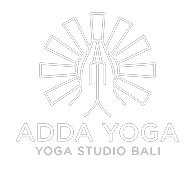Meditation Bali, Canggu and Seminyak
Are you looking to learn how to meditate, deepen your practice or just sit still in a friendly and welcoming environment?
Join us for our Yoga and meditation classes in Bali, Canggu and Seminyak!
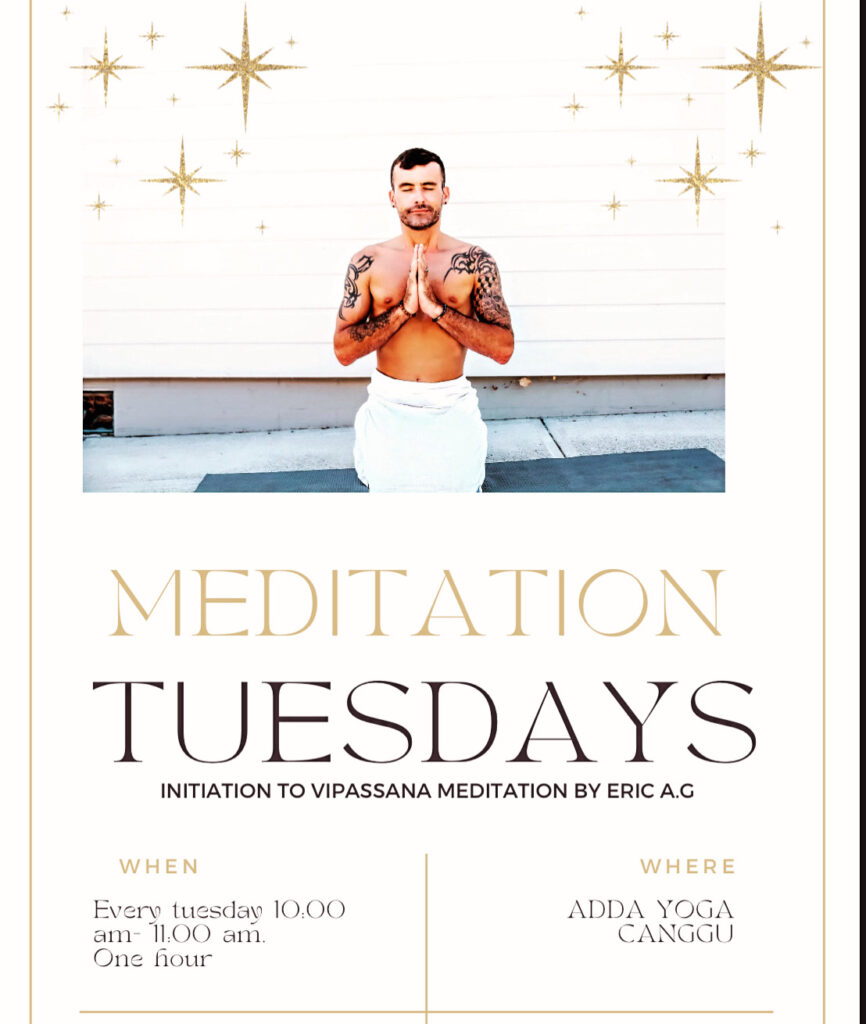
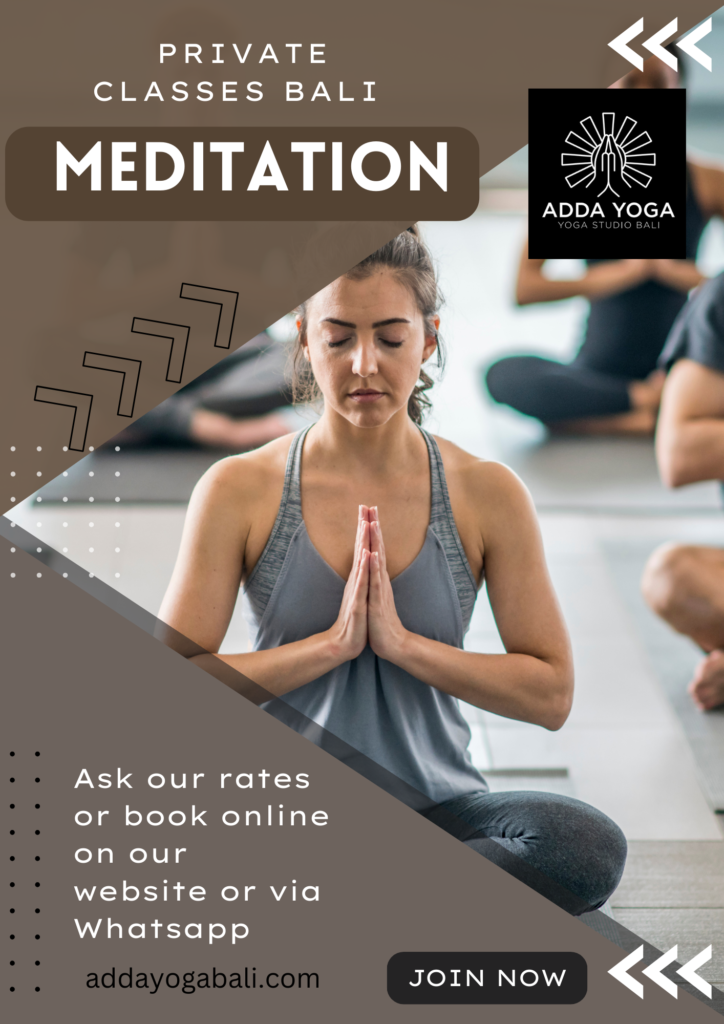
What is Meditation?
For thousands of years, people have been meditating in cultures worldwide.
Meditation is an ancient practice used for centuries to promote peace, relaxation and self-awareness.
Meditation involves sitting quietly and focusing on your breath or a mantra (a repeating word or phrase).
The goal of meditation is to clear your mind of all thoughts and distractions so that you can focus on the present moment.
Meditation can be done anywhere and doesn’t require any special equipment. All you need is a quiet place to sit or lie down.
Meditation has a long history in almost all major world religions, including Buddhism, Hinduism, Christianity, Judaism, and Islam.
But, these days, many people meditate without any regard to their religious or spiritual beliefs or habits, even though it is frequently implemented for religious purposes.
Best meditation classes and spiritual retreats in Bali
You can either daily practice meditation in your yoga studio , mix with your daily yoga sessions ( yin yoga for example ) or have a retreat experience with like-minded individuals during a few days.
If you choose the retreat, Bali is the perfect place. You will have daily yoga classes, outdoor activities , cultural activities among the rice paddies, and organic food and healthy food to listen to your body and work on your spiritual growth. Silent meditation experience are available on the island too
There are many different types of meditation / relaxation / groundings / healings , each with its own unique benefits. Some of the most popular types of meditation include:
– Mindfulness meditation: involves paying attention to the present moment, without judgment. It can help to reduce stress, anxiety, and depression, and improve focus and concentration.
– Body scan meditation: This type of meditation involves focusing on different parts of your body, one by one. It can help to relax your body and mind, and reduce pain and tension.
– Deep breathing meditation: focusing on your breath. It can help to calm your mind and body, and reduce stress and anxiety.
– Yoga nidra: Includes lying down in a comfortable position and relaxing your body and mind. It can help to reduce stress, anxiety, and insomnia, and improve sleep quality.
– Qi gong: This meditation from China involves moving your body in a slow and controlled way. It can help to improve your balance, coordination, and flexibility, and reduce stress and anxiety.
– Tai chi: Moving your body in a slow and graceful way. It can help to improve your balance, coordination, and flexibility, and reduce stress and anxiety.
– Reiki: Using your hands to heal yourself and others. It can help to reduce stress, anxiety, and pain, and improve your overall well-being.
– Crystal healing: This type of meditation involves using crystals to heal yourself and others. It can help to reduce stress, anxiety, and pain, and improve your overall well-being.
– Sound healing: Technic using sound to heal yourself and others. It can help to reduce pressure, anxiety, overthinking and pain, and improve your overall well-being.
In Bali, you will find quite a few meditation placed local healers and spiritual heritage for an unique experience on your inner self
Interested by some meditation experiences, cone an join us at ADDA YOGA, it could be a unique opportunity and the right choice for your life.
You will find our daily schedule on our website and don’t hesitate to ask for any retreats !
Another one is Vipassana meditation .
What’s Vipassana ?
Vipassana meditation is a type of meditation that involves observing the sensations in the body. It is a form of mindfulness meditation, which means that it focuses on paying attention to the present moment without judgment. Vipassana meditation is often used to develop insight into the nature of the mind and to cultivate compassion for oneself and others.
The history of Vipassana meditation can be traced back to the Buddha, who is said to have taught it to his disciples as a way to achieve liberation from suffering. Vipassana meditation was later spread to other parts of Asia, and it is now practiced in many countries around the world.
There are many different methods of Vipassana meditation, but they all share a common focus on observing the sensations in the body. One common method is to sit in a comfortable position and to focus on the sensations of the breath. As you breathe in, you notice the sensation of the air moving in and out of your nostrils. As you breathe out, you notice the sensation of the air moving out of your nostrils.
Another common method of Vipassana meditation is to scan the body from head to toe, paying attention to the sensations in each part of the body. You might start at the top of your head and work your way down to your toes, or you might start at your toes and work your way up to your head. As you scan your body, you notice the sensations of tension, relaxation, pain, and pleasure.
Vipassana meditation can be a challenging practice, but it can also be very rewarding. Some of the benefits of Vipassana meditation include:
* Increased mindfulness and awareness
* Reduced stress and anxiety
* Improved focus and concentration
* Increased compassion for oneself and others
* Insights into the nature of the mind
If you are interested in learning more about Vipassana meditation, there are many resources available online and in libraries. You can also find Vipassana meditation retreats and classes in many communities.
In addition to the benefits listed above, Vipassana meditation can also be helpful for people who are struggling with chronic pain, depression, or anxiety. Vipassana meditation can help people to learn how to manage their pain or emotions in a more skillful way.
If you are new to Vipassana meditation, it is important to start slowly and gradually increase the amount of time you spend meditating each day. It is also important to find a comfortable place to meditate where you will not be disturbed. If you are having difficulty meditating, there are many resources available to help you, such as books, DVDs, and online courses.
Vipassana meditation is a powerful tool that can help you to develop insight into the nature of your mind and to cultivate compassion for yourself and others. If you are willing to put in the time and effort, Vipassana meditation can be a transformative experience.
And transcendental meditation ?
Transcendental Meditation (TM) is a type of meditation that involves the use of a mantra, or a repeated sound or phrase, to focus the mind and promote relaxation. It is a form of mindfulness meditation, which means that it focuses on paying attention to the present moment without judgment. TM is often used to reduce stress, improve focus, and promote overall well-being.
The history of TM can be traced back to the ancient Vedic tradition of India. In the 1950s, Maharishi Mahesh Yogi, a Hindu spiritual leader, brought TM to the West. TM quickly became popular, and it is now practiced by millions of people around the world.
There are many different methods of TM, but they all share a common focus on the use of a mantra. The mantra is typically a Sanskrit word or phrase that is repeated silently to oneself. The mantra is used to focus the mind and to promote relaxation.
TM is typically practiced for 20-30 minutes twice a day. It is best to practice TM in a quiet place where you will not be disturbed. To practice TM, sit in a comfortable position with your eyes closed. Begin by repeating your mantra silently to yourself. As you repeat the mantra, focus on the sound of the mantra and the sensations in your body. If your mind wanders, simply bring it back to the mantra.
TM can be a challenging practice, but it can also be very rewarding. Some of the benefits of TM include:
* Reduced stress and anxiety
* Improved focus and concentration
* Increased creativity and problem-solving skills
* Improved emotional regulation
* Increased self-awareness
* Improved physical health
If you are interested in learning more about TM, there are many resources available online and in libraries. You can also find TM courses and workshops in many communities.
The history of TM can be traced back to the ancient Vedic tradition of India. In the 1950s, Maharishi Mahesh Yogi, a Hindu spiritual leader, brought TM to the West. TM quickly became popular, and it is now practiced by millions of people around the world.
There are many different methods of TM, but they all share a common focus on the use of a mantra. The mantra is typically a Sanskrit word or phrase that is repeated silently to oneself. The mantra is used to focus the mind and to promote relaxation.
TM is typically practiced for 20-30 minutes twice a day. It is best to practice TM in a quiet place where you will not be disturbed. To practice TM, sit in a comfortable position with your eyes closed. Begin by repeating your mantra silently to yourself. As you repeat the mantra, focus on the sound of the mantra and the sensations in your body. If your mind wanders, simply bring it back to the mantra.
TM can be a challenging practice, but it can also be very rewarding.
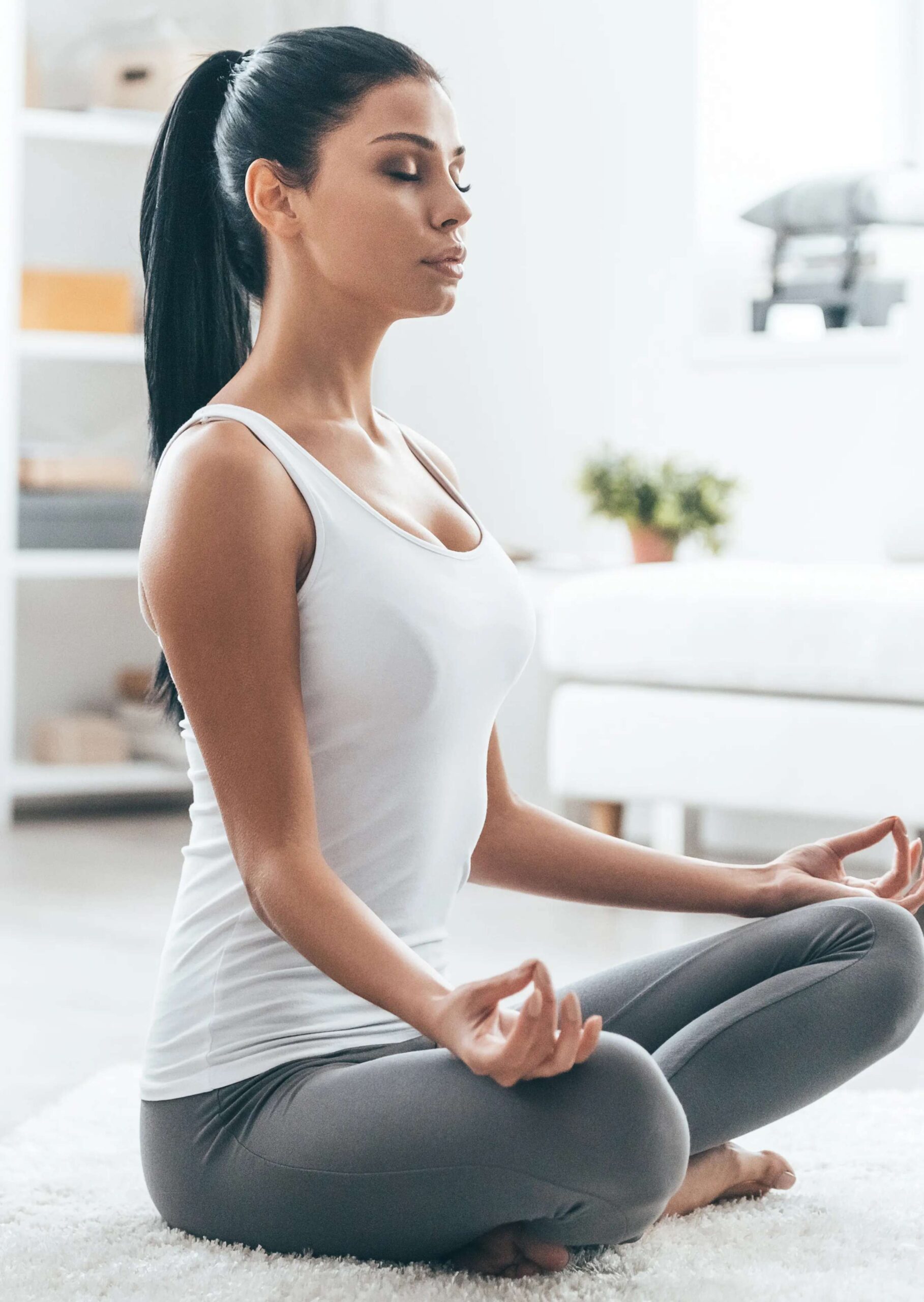
How to start your Meditation practice?
There is no one right way to meditate, and there are many different techniques that you can try.
The most important thing is to find a method that works for you and stick with it.
Here are a few tips to help you get started:
Set aside sometime each day to meditate. Even just five or ten minutes can be beneficial.
Find a quiet, comfortable spot to sit or lie down. You may want to use a cushion or blanket to support your back.
Close your eyes and focus on your breath. As you breathe in and out, try to let go of any other thoughts that are running through your mind.
If your mind wanders, simply bring your attention back to your breath. Meditation is not about clearing your mind completely; it’s about letting go of the constant stream of thoughts that can cause stress and anxiety.
When you’re finished, sit for a few moments and then slowly open your eyes. Take some time to journal about your experience or just take a few deep breaths before getting up and going about your day.

What will you need to start your Meditation practice?
You don’t need much to start practicing meditation.
All you really need is a quiet, comfortable place to sit or lie down.
You may want to use a Meditation pillow or bench to help support your back and keep your spine straight.
You may also want to use a light blanket or shawl to keep your body warm and relaxed. Remember, there is no “correct” way to meditate.
The most important thing is to find a meditation method or process that works for you and that you can stick with for the longest time.
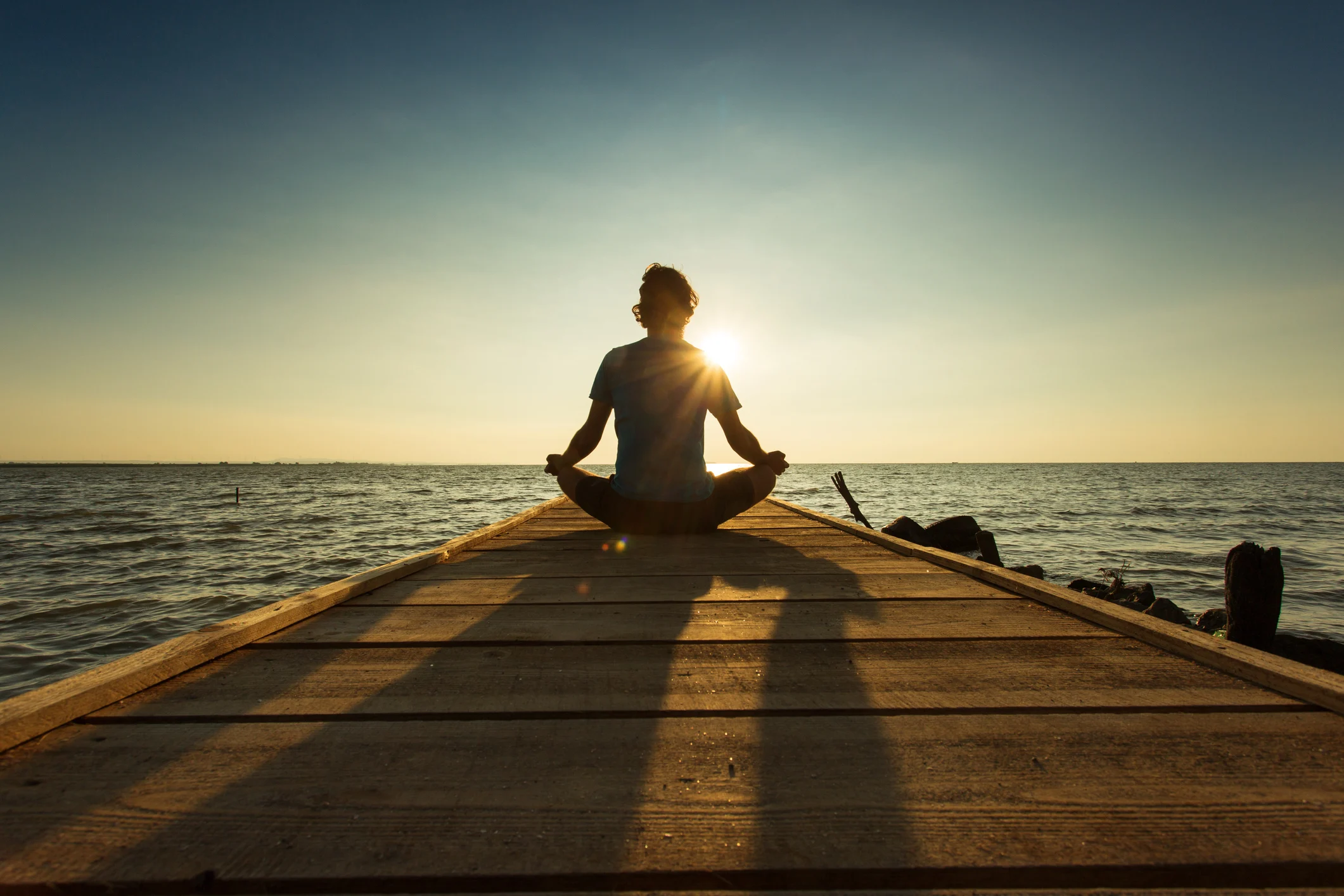
Vipassana meditation Bali, Canggu and Seminyak
There are many different kinds of meditations from different lineages and origins. One of the most well-known around the world is Vipassana meditation.
Coming from Buddhism, this kind of ancient mindfulness meditation is based on awareness and body sensations. You will observe your thoughts and physical state to dissolve mental impurity.
10 Health Benefits of Meditation and Yoga
Meditation has been found to have both physiological and psychological benefits.
The following are some of the main psychological, emotional, and health advantages of meditation:
- It can help improve mental well-being and reduce stress levels.
- It can help to improve focus and concentration.
- It can help to reduce anxiety and promote relaxation.
- It can help to improve sleep quality.
- It can help to reduce negative thinking and improve self-esteem.
- It can help to promote positive thinking and a more optimistic outlook.
- It can help to increase feelings of happiness and well-being.
- It can help to reduce cravings and unhealthy habits.
- It can help to boost immunity and fight illness.
- It can help to improve overall physical health and wellness.
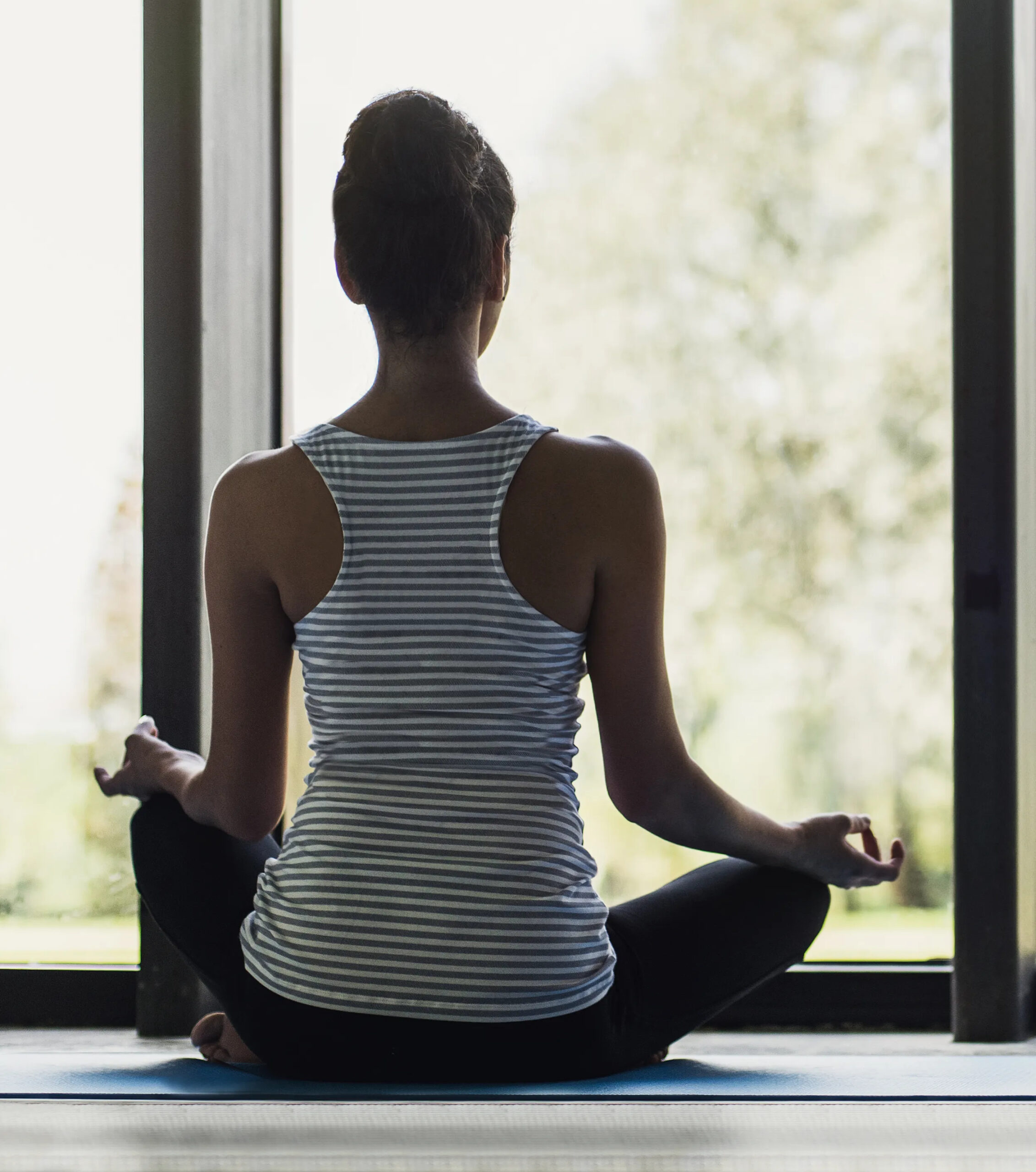

The Final Note: How could meditation be an asset in your life?
Yoga means “union” in Sanskrit, the ancient language of India. Whereas meditation is one of the eight “limbs” of yoga, a path that leads to spiritual liberation.
It’s a tool that can be used to calm the mind and experience inner peace.
Also, meditation is a personal journey, so trust your instincts and find what works best for you.
So, as you explore different meditation practices, be patient and keep an open mind. Meditation is a powerful tool that can help to improve your life in many ways, so give it a try and see how it can help you.
ADDA YOGA BALI, Meditation studio in Bali, Canggu, Seminyak
If you are looking for meditation classes in Bali, join us in our studio for a session where we will all practice together in a warm and quiet atmosphere.
Our shall is ideal for calm and still meditation practice, with a perfect vibe for inner peace and ultimate stillness.
